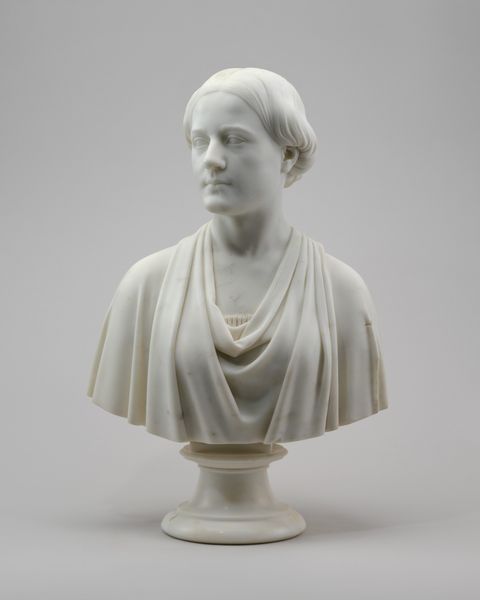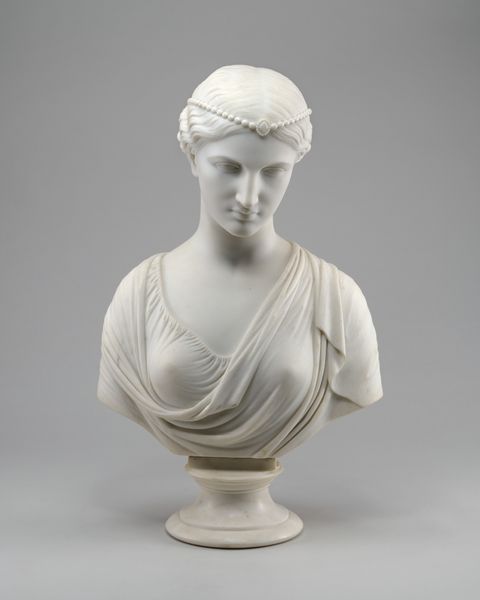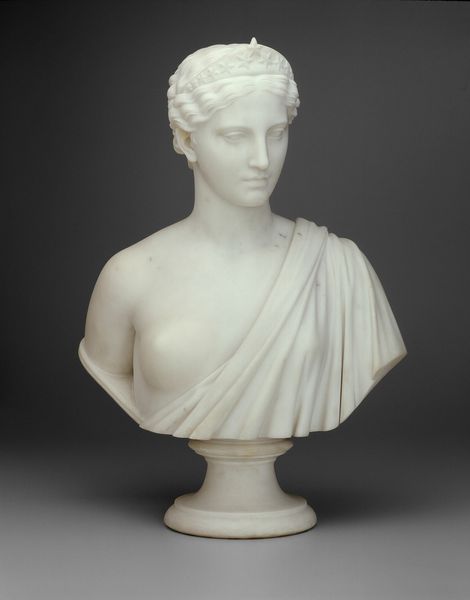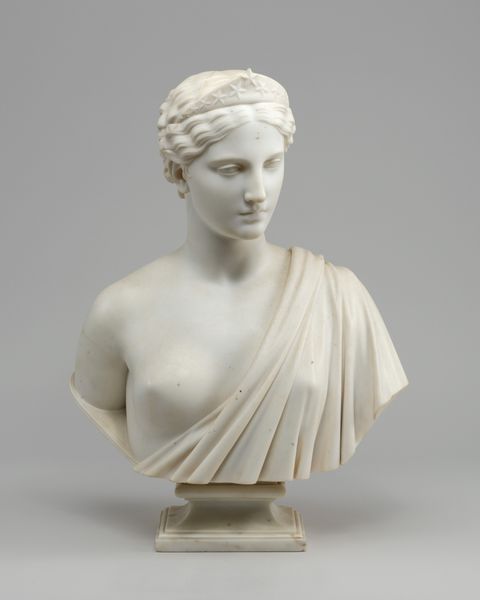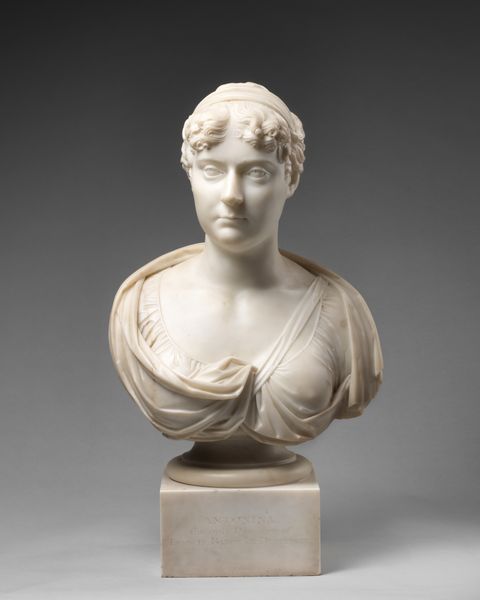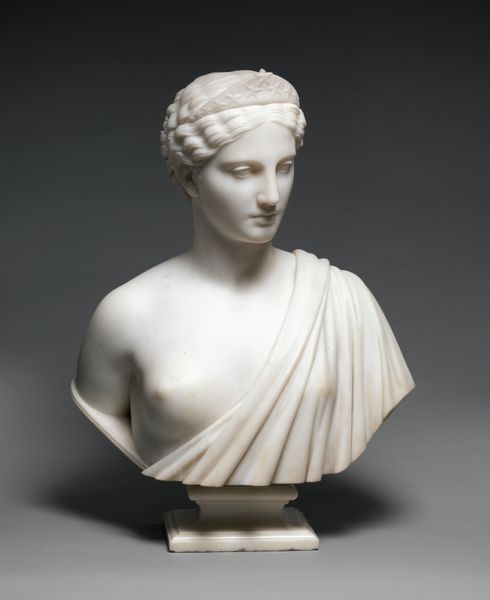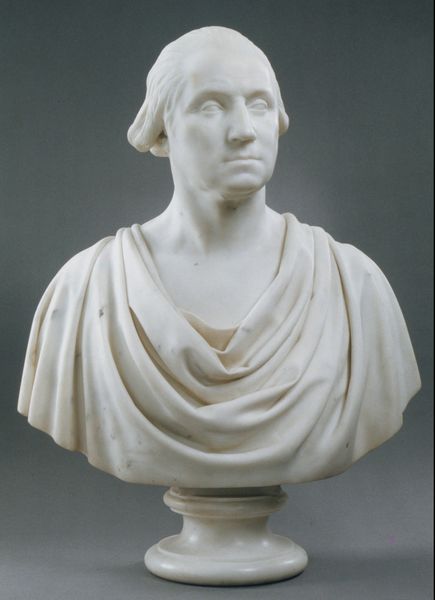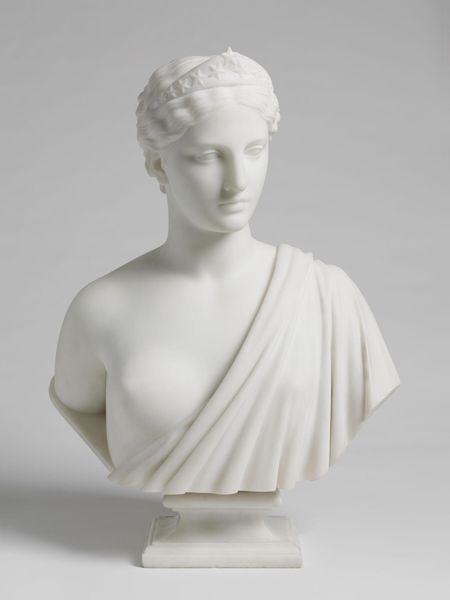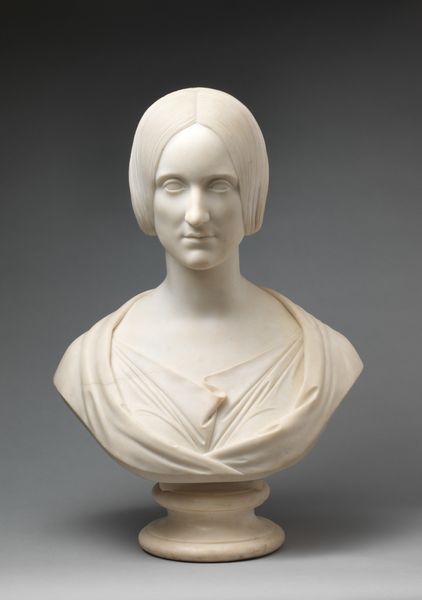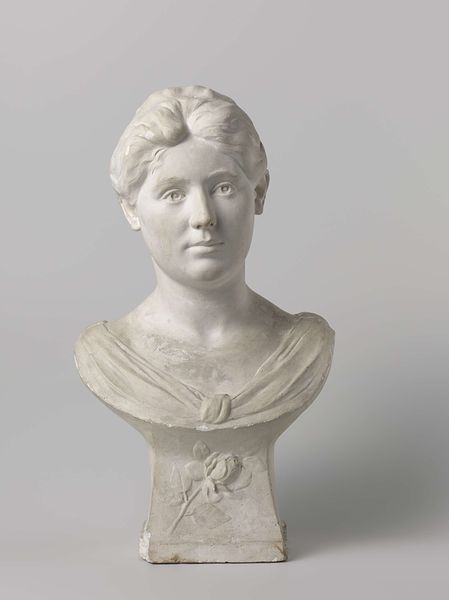
Dimensions: overall: 67.31 × 50.17 × 29.21 cm (26 1/2 × 19 3/4 × 11 1/2 in.)
Copyright: National Gallery of Art: CC0 1.0
Curator: Before us is Hiram Powers' marble bust of Alice Key Pendleton, created around 1870. Editor: It’s beautiful, and the marble glows with a soft, ethereal light. The smooth texture is quite captivating. What can you tell us about its historical context? Curator: Well, this piece exemplifies the Neoclassical style so popular during that era. It was a period where the elite and institutions asserted their identity through commissioned work in this style. Powers, an American expatriate in Italy, like so many artists working with marble at the time, really tapped into this market. Editor: That's interesting, you highlight the consumption side; did Powers himself quarry this marble or have workers do it? The level of skill is remarkable. It begs the question: Whose labor created the curves of those draped folds? The rendering of the subject's coiffure. How did he get this smoothness, the level of detail... it feels very idealized, in the mode of classical realism. Curator: You’ve hit on an important point. The idealization reflects a desire to connect American identity with the perceived values of ancient Greece and Rome – Powers sold many of these back home to great acclaim and lucrative commissions, effectively participating in building cultural taste and prestige for powerful people in America. We know that Hiram would use mechanical pointing devices to transfer a clay mold he produced, into a final version in marble with assistance from his Italian studio assistants. It was as much business acumen, working within a thriving market, as pure artistic expression. Editor: Exactly. So this sculpture not only portrays a specific individual, but also demonstrates the material and commercial dynamics of the 19th-century art world. Marble quarries were becoming sites of burgeoning extraction; these pieces were commissioned, produced in studios for transatlantic markets. Each phase with a distinct type of labor. Curator: Indeed. Looking at Alice Key Pendleton, we can also think about gender and representation. Noble bust-length sculptures of women communicated status, beauty, and virtue within these social and cultural parameters, often embodying then current social codes and political agendas. Editor: So, more than a pretty face, the bust embodies social aspirations, manufacturing processes and historical contexts? Curator: Precisely. The choice of material, the method of production, the social circles in which these would circulate all contribute to our understanding. Editor: This encounter enriches how we view this work – from simple aesthetic appreciation to recognizing its cultural and material complexities. Curator: Absolutely, a deeper appreciation arises when we contextualize its creation within its specific historical and material reality.
Comments
No comments
Be the first to comment and join the conversation on the ultimate creative platform.
